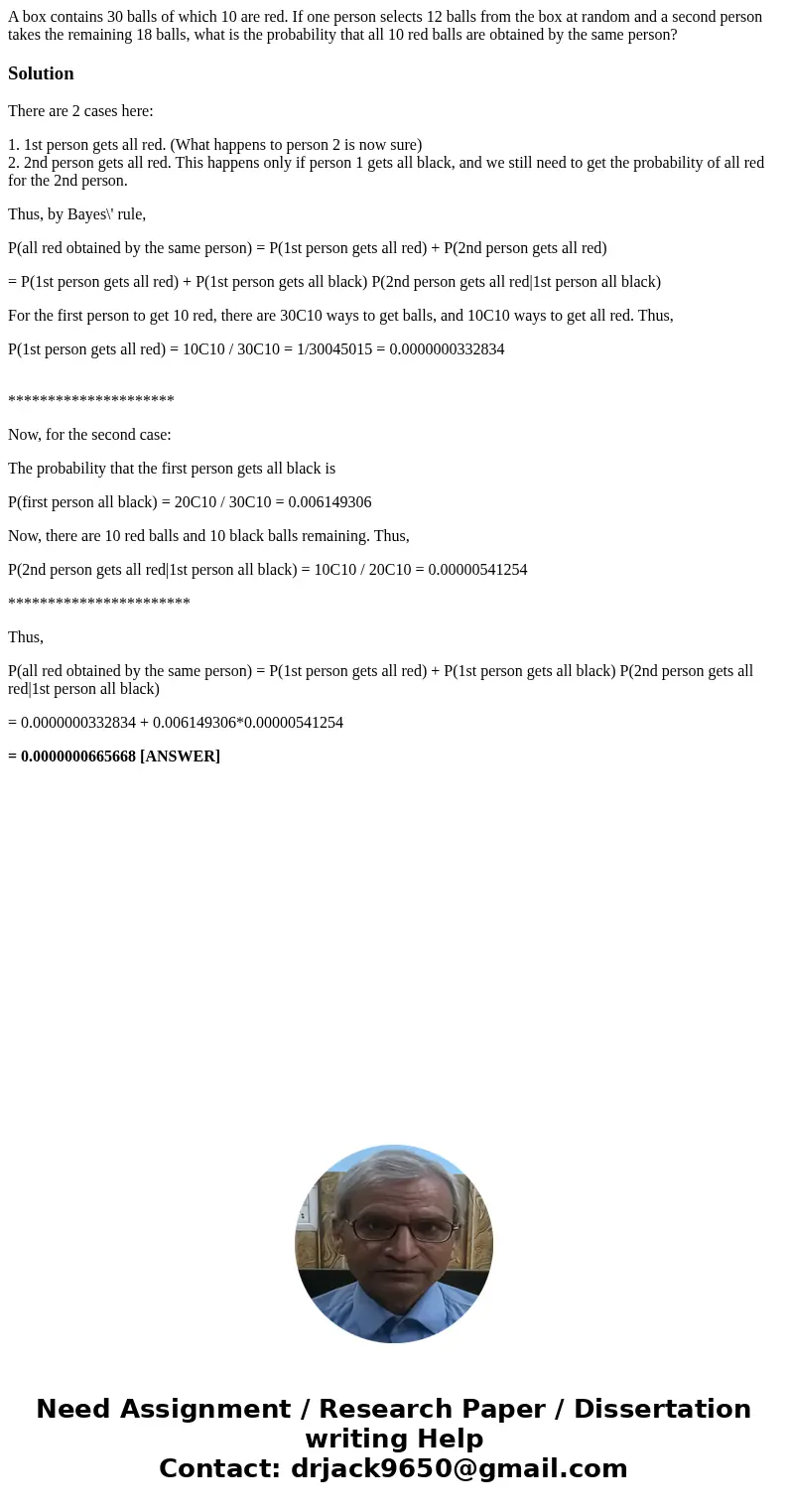A box contains 30 balls of which 10 are red If one person se
A box contains 30 balls of which 10 are red. If one person selects 12 balls from the box at random and a second person takes the remaining 18 balls, what is the probability that all 10 red balls are obtained by the same person?
Solution
There are 2 cases here:
1. 1st person gets all red. (What happens to person 2 is now sure)
2. 2nd person gets all red. This happens only if person 1 gets all black, and we still need to get the probability of all red for the 2nd person.
Thus, by Bayes\' rule,
P(all red obtained by the same person) = P(1st person gets all red) + P(2nd person gets all red)
= P(1st person gets all red) + P(1st person gets all black) P(2nd person gets all red|1st person all black)
For the first person to get 10 red, there are 30C10 ways to get balls, and 10C10 ways to get all red. Thus,
P(1st person gets all red) = 10C10 / 30C10 = 1/30045015 = 0.0000000332834
*********************
Now, for the second case:
The probability that the first person gets all black is
P(first person all black) = 20C10 / 30C10 = 0.006149306
Now, there are 10 red balls and 10 black balls remaining. Thus,
P(2nd person gets all red|1st person all black) = 10C10 / 20C10 = 0.00000541254
***********************
Thus,
P(all red obtained by the same person) = P(1st person gets all red) + P(1st person gets all black) P(2nd person gets all red|1st person all black)
= 0.0000000332834 + 0.006149306*0.00000541254
= 0.0000000665668 [ANSWER]

 Homework Sourse
Homework Sourse